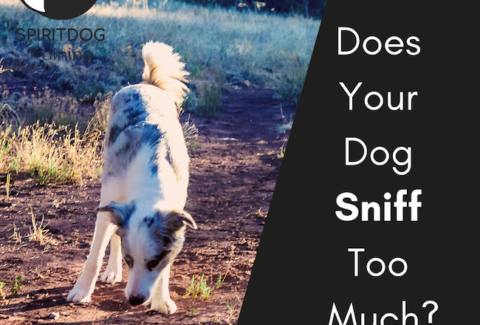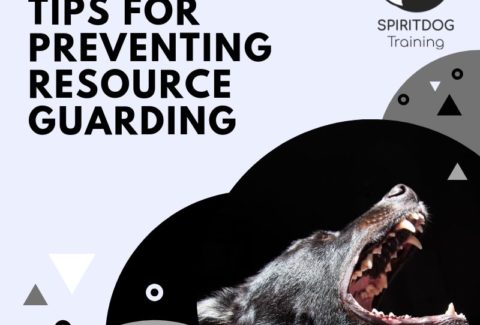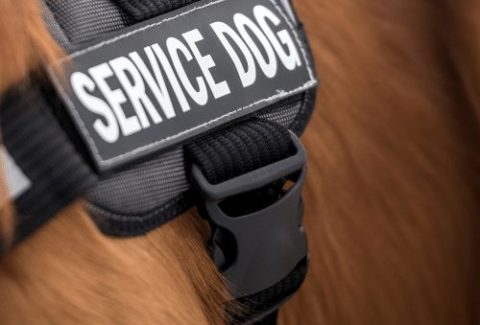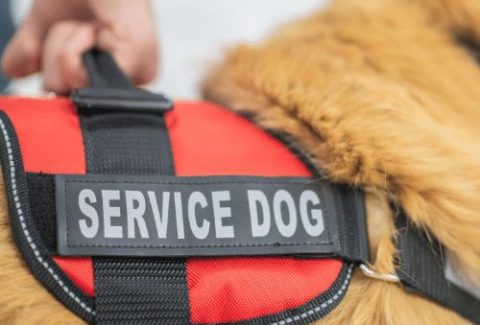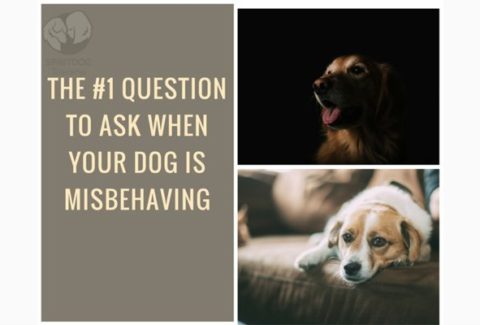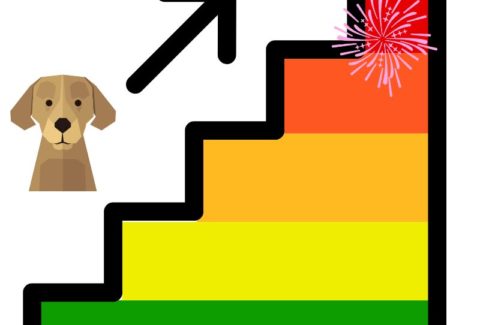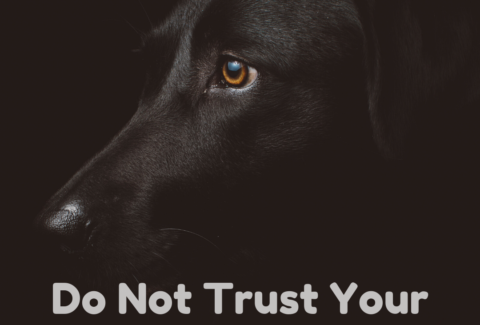Leash Reactivity in Dogs
March 15, 2021 2021-05-14 9:23Leash Reactivity in Dogs
Is your dog reactive towards other dogs (or people) when he is on a leash? Does he lunge, bark and growl? Walking a leash-reactive dog can be difficult and even dangerous. Today we will look at the causes of leash reactivity as well as how you can address this issue in training.
Table of Contents
What does “leash reactive” mean?
Leash-reactive dogs show a certain kind of reactivity that is present when they are on a leash. They react negatively and strongly towards other dogs and at times people.
Owners are often stumped because their dogs might be totally fine off-leash and enjoy playing and socializing with other dogs, but show strong reactions when they are on a leash.
In fact, many leash-reactive dogs actually enjoy going to doggy daycare or dog parks. Leash reactivity therefore is a situation-specific kind of reactivity.
What causes leash reactivity?
Leash reactivity stems from the fact that dogs experience restrictions when they are on a leash. On the one hand, they cannot use their body language as they usually would to communicate with other dogs. On the other hand, they cannot run over to another dog to play together. The frustration that is created by this can quickly become reactivity as well. Let’s look at both causes in detail:
Restrictions in body language
Dogs communicate through very intricate and detailed body language. They use their ears, face, tail and body to send a variety of messages to other dogs. For example, a dog who does not want to say hi to another dog may tilt back his ears, look into a different direction and walk away slowly.
A lot of doggy body language actually requires the dog to have ample space. Walking around, sitting down, bowing, stretching etc. are all used to communicate.
In dog language, meeting face to face like humans is not common and can communicate hostility. Dogs tend to greet each other sideways and “head-to-tail”, like this:
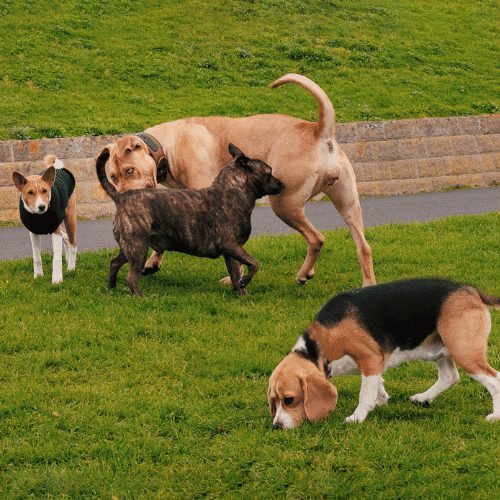
On a leash a greeting like this is usually not possible. The dogs are held back by their owners, forcing them to assume an unnatural greeting position that looks a lot more threatening. It creates a “charged up” energy between the dogs:
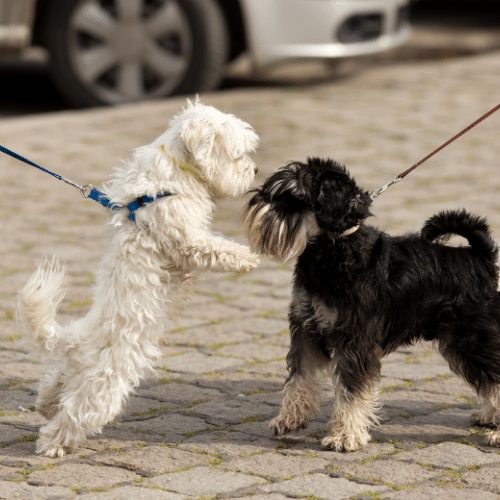
You should avoid letting dogs greet each other while straining on the leash like this. That is especially important for introducing reactive dogs!
On the other hand we have dogs that want to avoid greeting other dogs. A dog that wants to be deescalating and move away is prevented from doing so by the leash. The only choice he has is to go forward and react negatively.
Shy and not-so-confident dogs can be “trained” to be leash-reactive that way – because they have no chance to get far enough away, or use their body language to show that they have no interest in meeting.
Frustrated greetings
Dogs that want to say hi and are prevented by their owners from doing so often develop leash reactivity out of frustration. They can get quite intense in their desire to greet and play.
The best way to avoid leash-reactivity that stems from this frustration is to never allow your dog to greet other dogs while on leash. Teach your dog that a leash walk is a time for you and him. Take treats to practice leash walking, or try out our SpiritDog Parkour online class. Keeping your dog on a short leash may seem like the safest option, but it often makes the frustration worse by further reducing your dog’s movement. It is a much better idea to use a long line and stay further away from other dogs. That way your dog can move around, sniff, explore and get out some of his nervous energy without getting close enough to other dogs to have a negative reaction.

How do you desensitize a leash-reactive dog?
It is important to work on your dog’s leash reactivity. Dogs do not grow out of reactivity and this behavior pattern will only get worse and worse unless it is addressed in training.
The first step towards working with a leash-reactive dog is to keep the dog from crossing his threshold. This is going to be a bit inconvenient at times. You cannot keep walking exactly the same walking routes, past the same triggers and expect your dog to change his behavior.
In order to help your dog feel calmer on the leash, you need to only put him into situations in which he is able to succeed. For some dogs this means only walking during times when other people in your neighborhood are at work.
For some very leash-reactive dog it might even mean not walking on your usual walking paths at all and instead seeking out special places that are quiet and remote.
You want to expose your dog to the triggers of his leash reactivity in low intensity next. Plan a training session – for example by asking a friend with a dog if they could assist you. As soon as your dog sees the other dog, drop some treats for him. This will have him make the connection: dog = treat.
Of course, you should not expect your dog to change his behavior after one such training session. Reactivity can require a lengthy and involved training plan.
If you want an affordable and proven step-by-step approach, check out our tackling reactivity online class!
The Bottom Line
Leash reactivity is an extremely common behavior in dogs. It is caused by the leash and its restrictions. Leash reactivity is a very situation-specific behavior. Some dogs can be highly leash-reactive, but friendly and playful with other dogs off-leash.
It is important to not put your dog into situations in which he is going to further ingrain the reactivity. Instead, plan our your walks so that you will not push your dog over his threshold. Whenever possible, try to work with a long line instead of a very short leash. The freedom and option to move around will benefit your dog and already help him become calmer.
Set up specifically planned training situations and work on your dog’s response in these controlled settings. You can have him pair the “trigger dog” with treats.
As with every behavioral issue, solving reactivity takes time and commitment – do not expect your dog to change within a day or even a week.
Steffi Trott
Related Posts
Does Your Dog Sniff Too Much? Let him.
Tips For Preventing Resource Guarding in Dogs
Do Goldendoodles make good service dogs?
Best Service Dog in Training Vests
How To Train A Herding Dog
The #1 Question To Ask When Your Dog Is Misbehaving
Do You Really Want A Working Dog?
Do Not Trust Your Aggressive Dog
Check out our effective and affordable online dog training courses!
-
Sale Product on sale
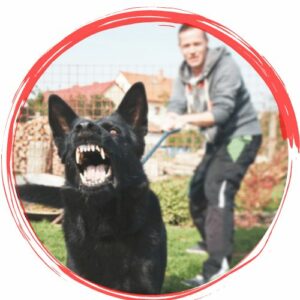 Tackling Reactivity Bundle
Tackling Reactivity Bundle
MONEY BACK GUARANTEE$564.00$49.00 -
Sale Product on sale
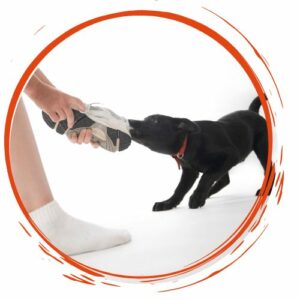 Perfect Obedience Bundle
Perfect Obedience Bundle
MONEY BACK GUARANTEE$349.00$49.00 -
Sale Product on sale
 Ultimate Puppy Bundle
Ultimate Puppy Bundle
MONEY BACK GUARANTEE$416.00$49.00 -
Sale Product on sale
 The Perfect Focus Bundle
The Perfect Focus Bundle
MONEY BACK GUARANTEE$445.00$169.00 -
Sale Product on sale
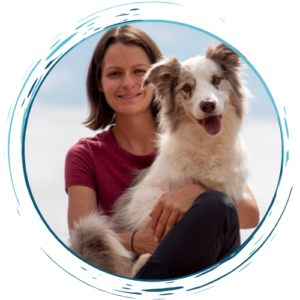 Ultimate Masterclass Bundle
Ultimate Masterclass Bundle
MONEY BACK GUARANTEE$2,213.00$499.00

